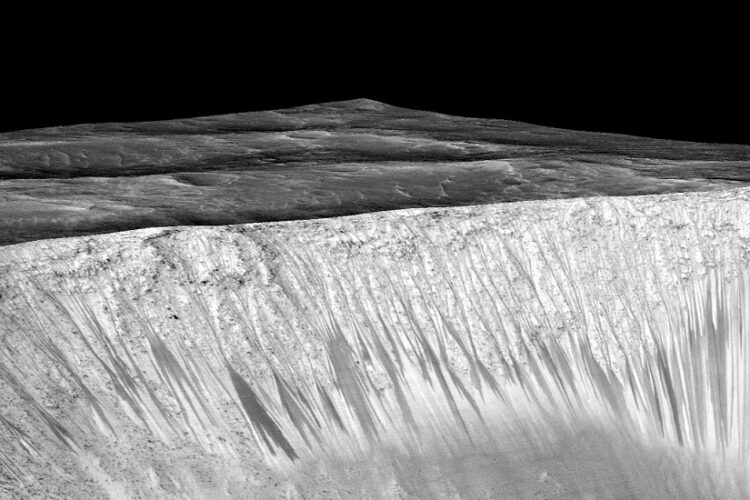Subsurface science could be driving the avalanches.
Martian avalanches may help clarify secret lines seen on the outside of the Red Planet, another investigation finds.
For quite a long time, researchers breaking down the Martian surface have identified bunches of dull, thin lines that occasionally show up on steep, sun-confronting inclines in the hotter areas.
Past examination has proposed that these puzzling dull streaks, called repeating slant lineae (RSL), are signs that pungent water routinely streams on the Red Planet during its hottest seasons.
Ongoing missions to Mars have uncovered that the planet has enormous underground pockets of ice. Earlier work proposed that hotter temperatures during the Martian spring and summer could help produce pungent salt waters proficient, at any rate for a period, of remaining fluid neglected, slim quality of the Red Planet.
Nonetheless, geologists have found issues with the idea of brackish waters causing RSL, clarified study lead creator Janice Bishop, a planetary researcher at the SETI (Search for Extraterrestrial Intelligence) Institute and NASA Ames Research Center, the two of which are in California’s Silicon Valley.
For instance, the point of slants where RSL happen and the highlights encompassing where they start “largely are inconsistent with a liquid flow process,” she said.
Presently Bishop and her associates recommend that synthetic responses could make the Martian surface helpless against avalanches that may clarify RSL.
“Although the surface of Mars today is dry and harsh and cold and dominated by wind and abrasion, underneath the surface, micro-scale interactions of salts with tiny ice and liquid water particles can be still occurring today,” Bishop said.
The researchers zeroed in on compound responses between sulfate minerals, for example, gypsum with chloride salts, of which table salt is one assortment. “On Earth, interactions between gypsum and chloride salts have caused collapse of parts of caves, sinkholes in soft sediments near salty lakes and ponds, and uplift of roads,” Bishop said.
The scientists hypothesized that comparable communications could occur on Mars, albeit the cold and dry conditions there would back these responses off. “I am super excited about the prospect of active chemistry below the surface on Mars, albeit at a slow rate,” Bishop said.
In the new investigation, the researchers led lab probes combinations of sulfates, chloride salts, minuscule ice particles and volcanic debris like Martian soil. They froze and defrosted such blends at the sorts of low temperatures found on the Red Planet.
The specialists discovered slender movies of slushy water framed on the surfaces of the mineral grains. They recommended these movies could extend and contract after some time, prompting changes and withdrawals under the Martian surface. Wind and residue on these shaky surfaces could then set off avalanches, creating the lines seen on the Red Planet, Bishop clarified.
The researchers noticed that later on, surface missions on Mars to late RSL destinations could help test their model.
Disclaimer: The views, suggestions, and opinions expressed here are the sole responsibility of the experts. No Unique Analyst journalist was involved in the writing and production of this article.

